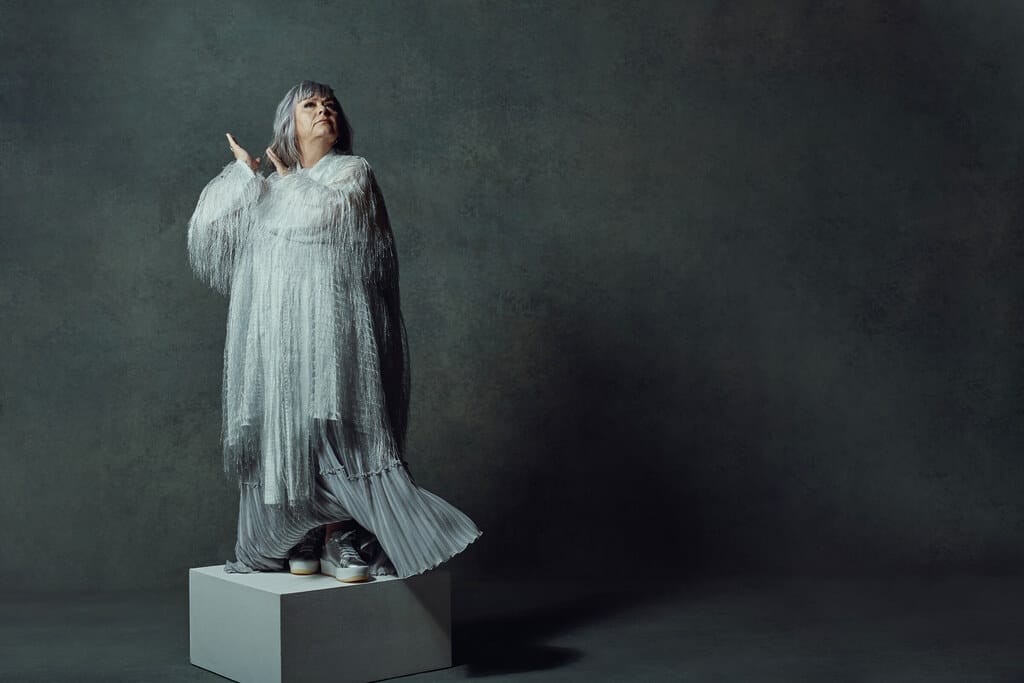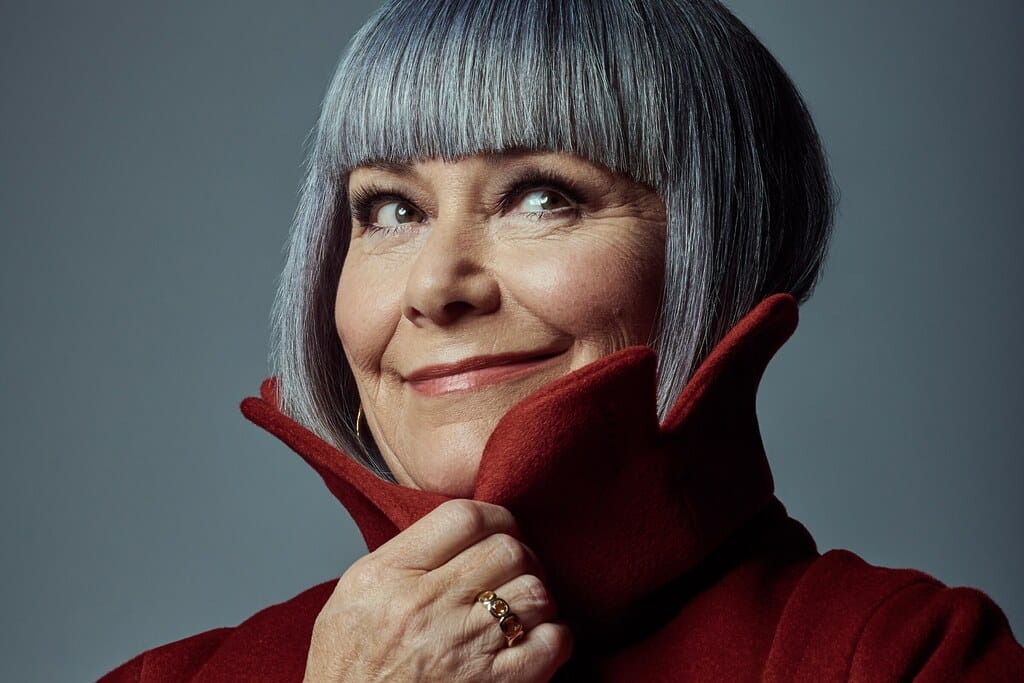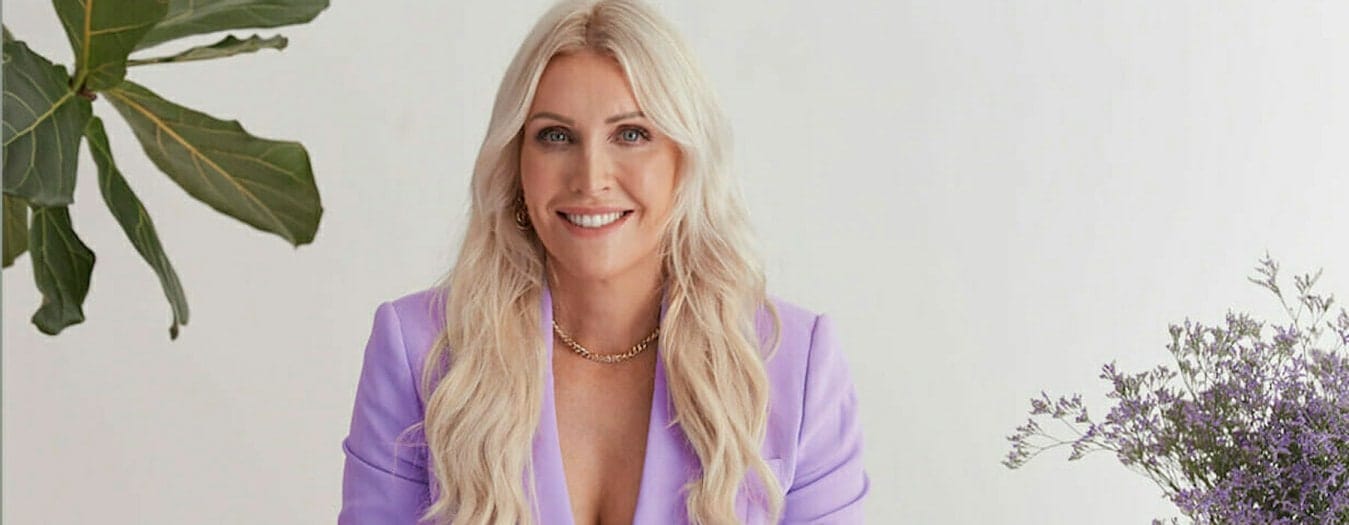Dawn French on loving herself

Written by: Hadley Freeman
Dawn French quit her sketch show because she felt so ugly. Now the “1980s roly-poly comedian” wants us all to stop fretting about our faults.
It’s a rainy Thursday night in September and the news is full of stories about a certain male comedian that make you want to grab your daughters and hide them in a cave. But inside the London Palladium a certain female comedian is spreading proud, defiant joy. “Hello, I’m beloved 1980s roly-poly comedian Dawn French,” she says by way of introduction to her one-woman show, mocking and owning the once ubiquitous sneery description of her.
French has been an adored member of the British comedy elite since French and Saunders first aired in 1987, and 36 years later that adoration appears not to have waned a jot. The audience — older couples, groups of young men, pairs of young women — gasp with delight at the stories from her career and her 25-year marriage to Lenny Henry, which ended in 2010. She describes the time Ben Elton came up to her at a party and told her he was writing a play: “And I want you to be the lead,” he told her. She recreates her gushing excitement before then switching back to playing a bemused Elton. “I said I want Hugh to play the lead. Hugh Laurie?” Elton did later write a play for her, she adds, and then puts up the poster on the screen behind her for those who have forgotten what that 1991 West End hit was called: Silly Cow. Across the aisle, Dan Levy from Schitt’s Creek and Emma Corrin off The Crown are in near hysterics.
French has called her own show Dawn French Is a Huge Twat and it consists of her describing her most idiotic moments. It will be followed by her latest book, The Twat Files, which includes stories from the show and more. “Now you’ve seen the twat in me and maybe it will help you recognise the twat in you — and we can celebrate being huge twats together!” she says at the end, arms aloft, and the audience roars with happiness.
The next day I meet French, 65, backstage at the Palladium hours before her next show, and I apologise for the giant spot on my forehead. “Stop it! I love flawed people and don’t apologise for something so totally normal anyway,” she says looking firmly into my eyes and not at the spot at all. I long to hug her, but suspect that might be flawed behaviour too far. She is wearing a long brown tunic, black leggings and trainers and looks lovely, with her grey bob (she stopped dyeing her hair during Covid) and a face free of make-up and filler.

“I never thought of you as a “roly-poly comedian”, I tell her. “But that’s what was said about me constantly! Certainly until recently, when it became unfashionable to be so unkind. But for many years Jennifer [Saunders] and I were always described by how we looked, especially me, because I was the bigger one. It was always about ‘running too fat’ or ‘plump’, and they never said that about any of the male comedians. I absolutely own whatever my size is and I will call myself whatever I want. But if I feel like the intent is to shame me, I will not have it,” she says. It is why she refers to her best friend, Saunders, as “Fatty”: she is, once again, mocking and owning the sneers.
It’s impossible for today’s young women to understand just how groundbreaking French and Saunders felt back in the 1980s: in a comedy landscape that was even more male- dominated than it is today, here were two women with their own show, making character- led sketches about — but not exclusively about — women, from Madonna to mothers who never stop commenting about what’s on TV (“Is it necessary that we should watch a grown woman with teeth like that?”).
They emerged from the alternative comedy troupe the Comic Strip, along with Alexei Sayle, Rik Mayall and Adrian Edmondson (who married Saunders in 1985). Nigel Planer co-founded the Comic Strip and he was at French and Saunders’s audition. He tells me: “Female comedians often have to show male characteristics because that kind of testosterone aggression is what the stand-up world is built on. But here were these two girls with cut-glass accents in cardigans doing sketches about awkwardness, and we thought that was so cool. Plus they were really funny. That was the clincher.”
This is an excerpt from WOMAN Magazine, read the full article in Volume 1, on sale now at all good magazine retailers.



